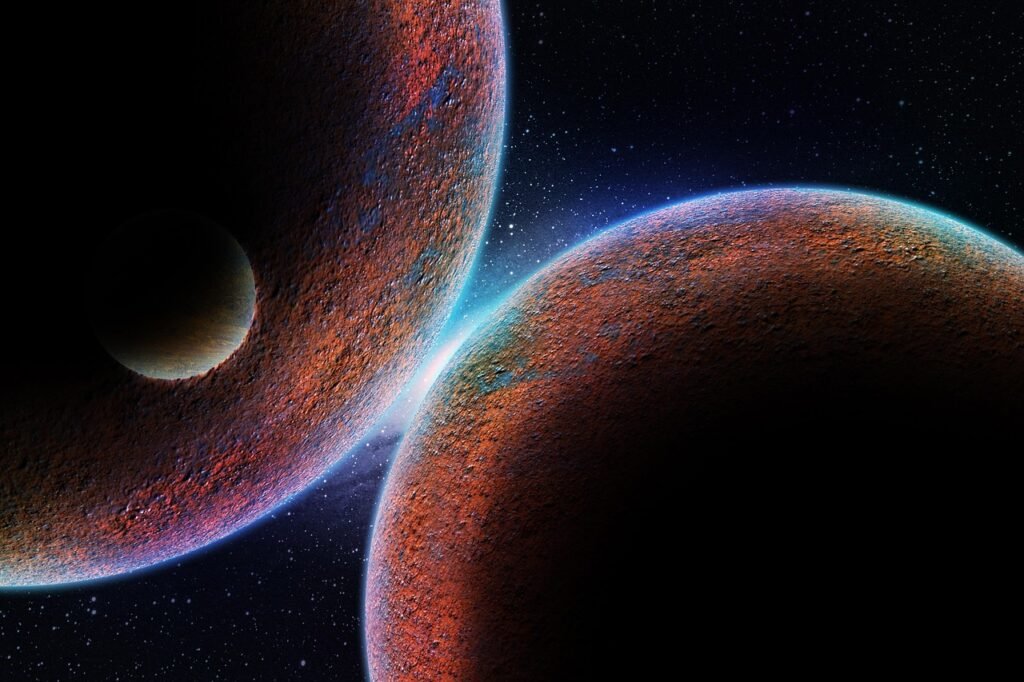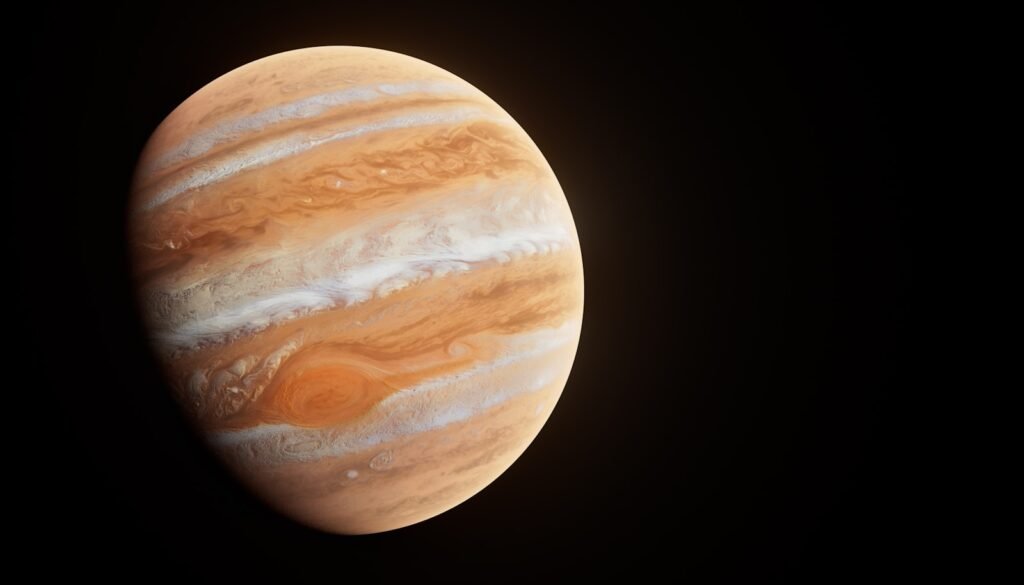Think you understand reality? Think again. You might be reading this right now in one universe while another version of yourself is having breakfast in a completely different dimension. This sounds like science fiction, yet some of the most brilliant minds in physics are taking these ideas seriously.
Scientists today are exploring mind-boggling theories that challenge everything you believe about existence. From universes that branch at every decision to dimensions folded beyond our perception, these concepts are reshaping how we understand our place in the cosmos. Let’s dive into the most fascinating theories that suggest reality is far stranger than you could ever imagine.
The Many-Worlds Interpretation

Every quantum measurement, according to physicist Hugh Everett III’s 1957 theory, causes the universe to split into multiple versions where all possible outcomes simultaneously occur. When you observe a quantum particle, the universe literally duplicates, creating separate realities for each possible result.
This branching happens constantly, creating an infinite array of parallel worlds where slightly different versions of your life play out, though you can never access or communicate with these alternate realities. If you’ve ever been in a dangerous situation where death was possible, somewhere in the multiverse there’s a reality where you didn’t survive. Still, this interpretation eliminates the paradoxes of quantum mechanics by suggesting nothing is ever truly random, just experienced differently across infinite dimensions.
Eternal Inflation and Bubble Universes

Inflation in the early universe might never have stopped everywhere at once, creating a hypothetically infinite multiverse where most regions continue expanding exponentially. This eternal inflation theory suggests countless bubble universes individually form and grow within an ever-expanding background multiverse, with our observable universe being just one bubble among infinity.
During the universe’s first fraction of a second, different regions of space-time expanded at varying rates, potentially creating separate bubble universes with their own distinct physical laws. These bubble universes can’t contact each other because they expand faster than light speed, making them forever unreachable even if we traveled toward their edges. As physicist Andrei Linde explains, eternal inflation predicts a self-reproducing multiverse where all possibilities are realized, meaning somewhere another you is reading this exact sentence.
String Theory’s Hidden Dimensions

String theory proposes up to 11 dimensions exist, with our universe being one of many “branes” floating in higher-dimensional space, each potentially having unique physical laws and constants. The theory suggests everything in the universe can be explained by incredibly small strings vibrating in dimensions we cannot see, potentially explaining phenomena from subatomic particles to gravity itself.
Beyond our familiar three spatial dimensions, quantum physics suggests additional dimensions might be compactified or hidden from everyday experience. These extra dimensions could house entirely different realities operating under completely foreign physical principles. As physicist Brian Greene notes, mathematical descriptions of the physical universe almost inevitably lead to some version of multiverse theory, potentially representing a fantastic upheaval in our understanding.
The Holographic Universe Theory

The holographic principle suggests our three-dimensional reality might actually be information encoded on a two-dimensional surface, making our entire universe essentially a hologram projected from a distant boundary. This mainstream scientific hypothesis proposes that everything you perceive as three-dimensional is actually a projection from a flat plane encoded with information like computer code.
Juan Maldacena’s AdS/CFT correspondence theory demonstrates a holographic connection between gravity in three dimensions and quantum physics on a two-dimensional boundary, suggesting fundamental links between different dimensional realities. This principle might solve quantum entanglement paradoxes and black hole information problems by preserving all information on two-dimensional surfaces while maintaining the appearance of three-dimensional space. The implications are staggering: your entire existence might be sophisticated information processing on a cosmic screen.
Quantum Tunneling Between Realities

Quantum mechanics reveals particles can exist in multiple states simultaneously through superposition, with the Many-Worlds interpretation arguing that all possible states continue existing in parallel universes rather than collapsing to single outcomes. Quantum fluctuations in fundamental fields cause some regions to remain inflating while others tunnel out to form separate universes through quantum processes like bubble nucleation.
Quantum entanglement demonstrates particles maintaining mysterious connections across vast distances, potentially hinting at higher-dimensional realities that connect seemingly separate regions of space and time. This suggests reality itself might be more fluid than previously imagined, with quantum effects potentially allowing information or even consciousness to leak between parallel dimensions. The boundaries between realities might be far more permeable than classical physics suggests.
Cosmological Fine-Tuning and Anthropic Selection

Our universe’s fundamental constants appear perfectly calibrated for galaxy, star, planet, and life formation, with even slight adjustments making complex structures impossible in what’s called the fine-tuning problem. Physicist Brandon Carter proposed around 1970 that perhaps our cosmic region is special, leading us to consider why we exist in this particular branch rather than countless other possibilities.
Scientists explore the possibility of multiple realities specifically because of these fine-tuned constants that allow galaxies, stars, planets, and life to form as we observe them. Each universe in a theoretical multiverse might operate under different physical laws and constants, with conscious observers naturally finding themselves in universes capable of supporting their existence. This anthropic reasoning suggests we might inhabit one of countless realities, with most being completely inhospitable to life as we know it.
Brane Cosmology and Membrane Collisions

String theory proposes our universe could be one of many “branes” floating in higher-dimensional space, with each brane representing a different universe with potentially unique properties. While most pairs of bubble universes never collide due to distance and expanding space, some form close enough to meet, creating detectable perturbations in space-time that might appear as temperature patterns in cosmic microwave background radiation.
The multiverse theory suggests that if our universe has siblings, we may have already bumped into them, leaving lasting signatures in the cosmic microwave background radiation that scientists can potentially detect. These collisions would create circular patterns with specific profiles in background radiation, providing unique signatures that no other cosmic phenomenon could produce. Such discoveries would represent the first direct evidence that parallel universes actually exist and occasionally interact with our own reality.
The Mathematical Universe Hypothesis

Physicist Max Tegmark’s Level IV multiverse theory suggests that any conceivable mathematical structure describes a physically real universe, implying infinite realities corresponding to every possible mathematical framework. This approach eliminates the need to specify initial conditions, physical constants, or even fundamental laws, as all mathematical possibilities would exist simultaneously in a vast multiverse hierarchy.
Rather than being complex, higher-level multiverses might actually be simpler, with each level removing the need to specify certain parameters until the ultimate multiverse requires no specifications whatsoever. This mind-bending concept suggests that mathematical structures aren’t just descriptions of reality but are reality itself. Every mathematical possibility, no matter how abstract or seemingly impossible, corresponds to an actual universe where those mathematical laws govern existence.
Quantum Computing and Multiverse Evidence

Google’s quantum chip Willow has sparked debates about multiverse theory, with some scientists suggesting its extraordinary computational power could result from processing information across parallel universes. Physicist David Deutsch argues that quantum computers might simultaneously process information in multiple parallel realities, with each computation occurring in distinct branches of the multiverse, potentially explaining algorithms that seem impossibly efficient for classical computers.
Google’s quantum team leader explicitly linked their chip’s success to multiverse theory, noting that computational times exceed known physics timescales and vastly exceed the age of the universe. However, critics argue that quantum phenomena like superposition and entanglement can be explained without invoking parallel universes, suggesting these achievements arise from purely mathematical principles within our single universe. The debate continues over whether quantum computing provides genuine evidence for parallel realities or simply demonstrates the strange but contained nature of quantum mechanics.
Ancient Wisdom and Modern Physics Convergence

Ancient Hindu texts like the Puranas describe multiple universes with their own governing principles, remarkably similar to modern multiverse theories that propose parallel realities with distinct physical laws. Hindu philosophy’s concept of maya, describing perceived reality as illusion hiding deeper truths, parallels quantum mechanics where particles exist in multiple states until observed, causing wavefunction collapse.
Hindu cosmology portrays time as fluid and multidimensional, similar to Einstein’s relativity where time experiences vary based on velocity and gravity, with ancient texts describing experiences of multiple lifetimes occurring instantly. These remarkable parallels suggest that ancient spiritual traditions and modern physics might be describing the same fundamental cosmic truths using different languages, with both pointing toward realities far more complex than everyday perception suggests. The convergence implies that human consciousness has long sensed deeper layers of existence that science is only now beginning to verify mathematically.
Throughout history, you’ve been told that what you see is what you get. These ten theories shatter that comfortable assumption completely. From quantum computers that might tap into parallel realities to ancient texts that anticipated modern physics, the evidence is mounting that reality is far more mysterious than anyone imagined.
Perhaps the most remarkable aspect isn’t just that these theories exist, but that they’re increasingly supported by cutting-edge experiments and mathematical frameworks. Whether you’re living in a hologram, experiencing one branch of infinite quantum splits, or inhabiting a bubble in an eternal multiverse, one thing is certain: the universe is stranger than you ever dreamed possible. What do you think about these mind-bending possibilities? Tell us in the comments.

Jan loves Wildlife and Animals and is one of the founders of Animals Around The Globe. He holds an MSc in Finance & Economics and is a passionate PADI Open Water Diver. His favorite animals are Mountain Gorillas, Tigers, and Great White Sharks. He lived in South Africa, Germany, the USA, Ireland, Italy, China, and Australia. Before AATG, Jan worked for Google, Axel Springer, BMW and others.




